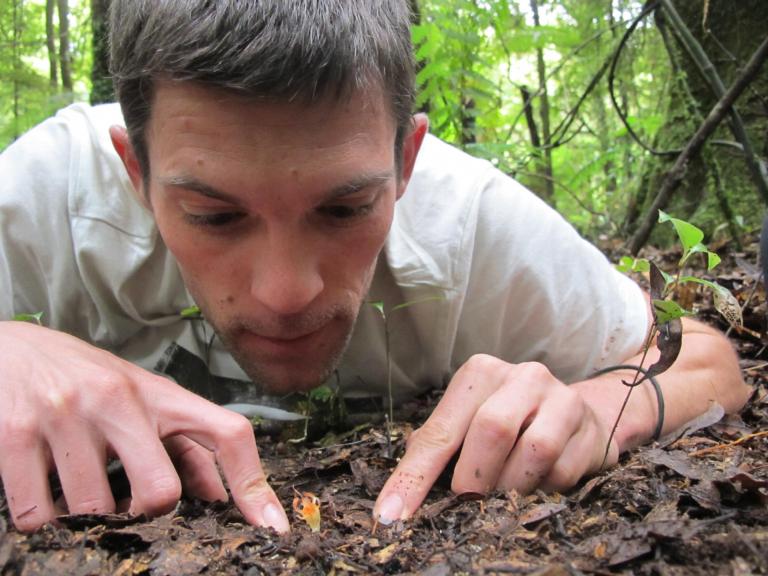
Plants live of solar energy, but some species can exchange food through underground fungal networks. Possibly, way more species are doing this than biologists thought. Naturalis researcher Vincent Merckx wants to determine which plants are sharing their sugars, and how they got this ability.
Explainervideo
Alternative carbon source
Vincent Merckx, researcher at Naturalis Biodiversity Center and the University of Amsterdam, received a 2 million euro Consolidator Grant from the European Research Council today. He'll be using this grant to set up a new research line on how plants use underground fungal networks as an alternative source of carbon.
Plants use light to grow: they use their green leaves to capture carbon from the atmosphere in a process called photosynthesis. It's basic textbook biology. But Merckx suspects that for many plants it's just part of the story. Plants that grow in the shade - deep in forests, for instance - they might be able to tap into another source of carbon: underground networks of fungi. This way, they can grow in spots that would otherwise be too dark to survive.
Up to 80% of all plants
“Some soil fungi form networks that connect plants", Merckx says. "We've known for a long time that these networks can be very important for some plants. I've been studying leafless plants that grow deep in the darkest parts of rain forests, and that use these networks as their sole source of carbon. But the idea that these networks might also work for green plants, is relatively new."
Merckx: “To be precise: this exchange is known for plants that use a group of fungi named the ectomycorrhiza. That's about two percent of all plant species, mostly trees from temperate climates. We now suspect that it also happens among plants that connect to a different group: the arbuscular mycorrhiza. And that's about 80% of all plants. If that idea is correct, we need to change our ideas about how plants grow."
Moreinformation
- Vincent Merckx' profile page
- More about the 'Wood Wide Web' of fungi on the website of the Society for the Protection of Underground Networks, of which Merckx is a member.
- Link to the ERC press release.